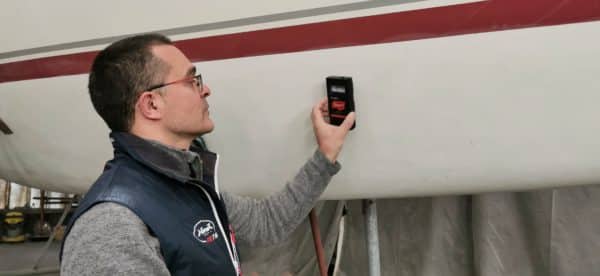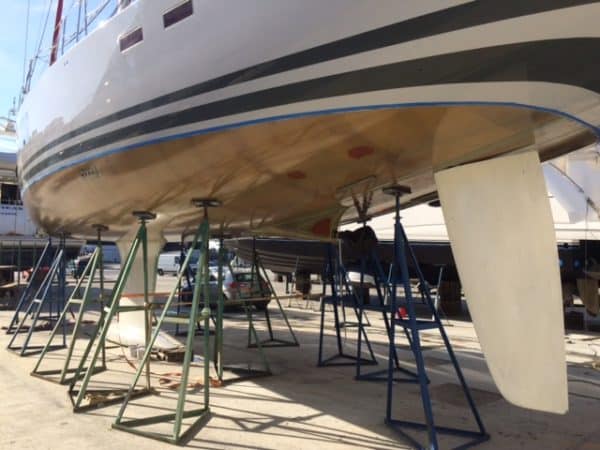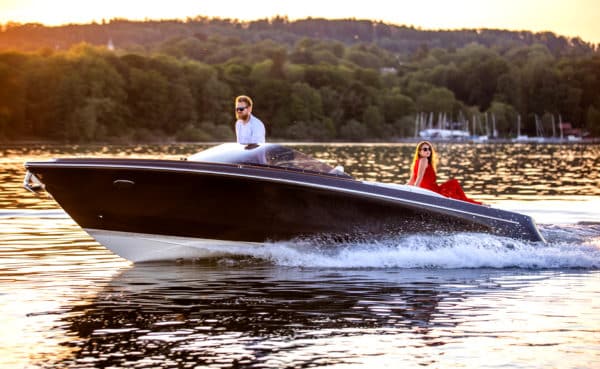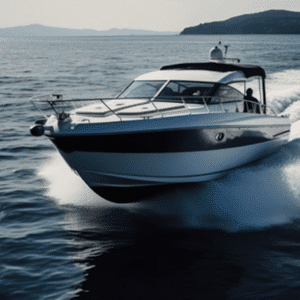Antifouling is a crucial part of boat maintenance. It’s essential to understand what antifouling is, why it’s important and how to choose the right product for your boat. In this guide, Nautix will help you discover everything you need to know about antifouling, from its history to its application and maintenance.
After a few minutes in the water, all hulls are immediately colonised by bacteria. These bacteria will accumulate and, after about a week, form a biofilm that is favourable to the appearance and development of the first molluscs and algae.
What is antifouling?
Antifouling paints are designed to protect boat hulls against the natural growth of marine organisms. As biocidal products, they attract a great deal of attention from boat owners and associations.
Between the need to protect hulls and environmental impact, these products are analysed by the authorities on the basis of a benefit/risk analysis in relation to the uses to which yachtsmen put them.
A bit of history
The use of antifouling dates back thousands of years. Ancient civilisations used oils and greases to protect the hulls of their ships from the growth of marine organisms. Over time, scientists have developed more sophisticated products to combat marine contamination, such as modern antifouling paints.
What is fouling and why is it a problem for boats?
A clean hull means you can control your fuel consumption and keep your boat gliding smoothly.
A dirty hull increases the hydrodynamic resistance of the hull, which increases the drag of your boat. This results in an increase in fuel consumption of between +5 and +20% (this percentage varies according to your boat and your sailing style). Antifouling paints therefore help to prevent premature engine wear. In addition, dirt can damage your hull protection and indirectly promote osmosis.
A clean hull is also a matter of safety.
Algae and molluscs increase drag and reduce manoeuvrability. Dirt will add weight and can significantly affect the responsiveness of your boat, which is potentially dangerous in rough weather or in harbours.
And an environmental issue
Finally, it is an environmental responsibility to avoid the spread of invasive species in the various ecosystems through which boats pass. Some species can completely change an ecosystem. More and more studies (e.g. Ship traffic connects Antarctica’s fragile coasts to worldwide ecosystems) are highlighting this risk throughout the world, even in Antarctica!
It is also important to know that the regulations in the field of antifouling have evolved considerably in recent years: they are now very strict and require manufacturers to control the environmental and toxicological impact of their paints. By choosing an approved paint, you can be sure that you are using a product whose impact has been measured and evaluated and which has been judged acceptable by national and European environmental agencies.
It is important to note that copper and its derivatives are active substances and are an integral part of the European biocide regulation. Although copper is a natural element, it nevertheless has an impact. Article R522-39 of the French Environment Code specifies that “Advertising for a biocidal product may under no circumstances bear the following statements: “Low-risk biocidal product”, “non-toxic”, “does not harm health” or any other similar indication. The reference to a biocidal product must not be such as to mislead as to the risks of the product for humans or the environment.”
Promoting ” Bio ” antifouling on the market is therefore prohibited.
Will we be able to do without antifouling altogether in the future?
Unfortunately, there is no effective alternative product or technical solution (tarpaulin, carpet, ultrasound, brushing machine, etc.) on the market today. What’s more, the cost is often high, the benefits uncertain (variable effectiveness) and often inconsistent with the use of the boat. Finally, these solutions are never studied from the point of view of the life cycle of the solution and its benefits/risks, like antifouling.
On the other hand, researching alternative solutions is a moral obligation for Nautix. We invest heavily in Research and Development, and we’re working hard on this. The Paint clean, Eco paint and Biopaintrop programmes, supported by the Pôle Mer Bretagne competitiveness cluster, are making progress in the development of antifouling paints without biocides.
In 2016, Nautix created a joint laboratory with the University of Southern Brittany called SAFER (Solution AntiFouling Eco-Responsable), labelled by the French National Research Agency, whose aim is to research and study alternative antifouling solutions. Nautix is a leading company in this field.
In the short term, each yachtsman must take responsibility and follow simple rules depending on the use of his boat:
- Choose hard matrix antifoulings rather than ablative ones
- Adjust quantities according to your knowledge of your sailing area
- If your boat only sails 3 months a year, a single coat of antifouling may be recommended. For a full-year result, 2 thick coats should be sufficient.
- Avoid products that are too high in copper, which release unnecessary amounts.
- Use dedicated careening areas (no uncontrolled careening)
- Do not add other products to the pots (strictly forbidden and a source of legal proceedings).
Choosing my Nautix antifouling guide
Nautix guides you with a questionnaire. Answer our questions and find the Nautix antifouling that's right for you.
The Nautix antifouling range
Nautix has been designing and manufacturing antifoulings in France for 40 years. Discover our range
Nautix advice for your antifouling
Nautix advises you on the application, choice and maintenance of your antifouling with this detailed article.






